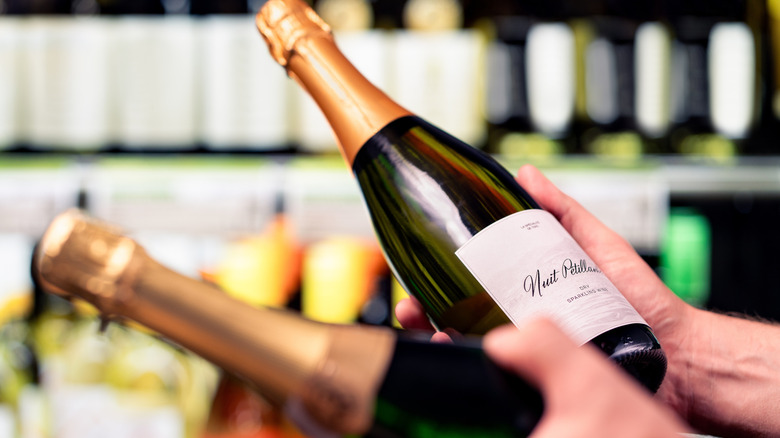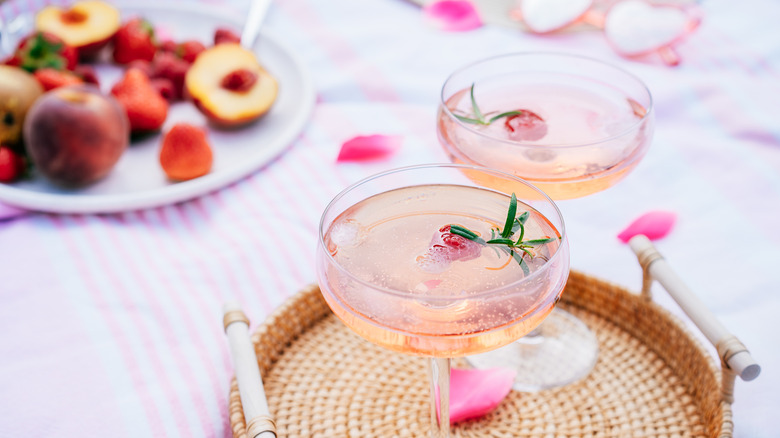Is There A Difference Between Champagne And Prosecco?
Pop the cork or twist the cap? If you've ever wondered whether Champagne and Prosecco are interchangeable sparkling wines or two entirely different bubbly beverages, you're not alone. So, let's dive into the basics of Champagne vs. Prosecco. Both of these delicious and celebratory drinks are fizzy, festive, and oh-so-fun to sip, but the truth is they're as different as croissants and cannoli. While Champagne has a reputation for luxury and celebration, being described by some authors as "bottled stars," Prosecco is the approachable, everyday alternative that still feels a bit special.
The key difference lies in where they're made. Champagne, as its name suggests, comes exclusively from the Champagne region of France, where only a handful of grape varieties are used in the sparkling drink. Meanwhile, Prosecco hails from Italy's Veneto region and is crafted primarily from the Glera grape, lending it a light, fruity profile.
You don't need a sommelier certification to appreciate each drink for what it is. Whether you're toasting to a milestone or just indulging on a weeknight, understanding these sparkling wines will elevate your sipping game. Let's swirl, sip, and settle this effervescent debate once and for all.
What sets Champagne apart from Prosecco?
At first glance, Champagne and Prosecco might seem like bubbly cousins, but their differences go beyond their origins. Another key distinction lies in the production process. Champagne gets its bubbles through the méthode Champenoise: a labor-intensive process where the wine ferments a second time in the bottle to create complex, toasty flavors. Prosecco, on the other hand, is made using the Charmat method, with its second fermentation happening in large tanks, resulting in a fresher, more fruit-forward taste. If Champagne is the serious tuxedo-clad star of a gala, Prosecco is the carefree guest twirling on the dance floor.
Price tags often reflect these differences, too. Champagne is pricier due to its lengthy production process and smaller geographic origins, while Prosecco's streamlined method makes it more wallet-friendly. But don't let cost dictate your choice: There's a sparkling wine for every occasion and budget, whether you're planning a wedding toast or jazzing up brunch with mimosas. With a bit of knowledge (let's not get into the debate between Prosecco and Prosekar right now), you can confidently pair the right bubbly with the moment, proving once and for all that knowing your bubbles isn't just sparkling, it's dazzling.

